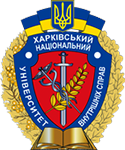Problems of abuse of law when applying to the European Court of Human Rights
Abstract
The article focuses on the fact that abuse of law is not only an urgent problem of modern legal science, but also one of the most complex and important issues to be addressed. This phenomenon is becoming aggressive and global, negatively affecting the processes of democratisation and consolidation of statehood. The prevalence of cases of abuse of law can slow down the development of society, violating the acquired norms and values. It is important to understand that achieving stability in social relations and their further development is impossible without taking into account the specifics of this legal phenomenon. Abuse of law not only violates the basic principles of law, but also poses a significant threat to the development of the rule of law and the determination of its future course.
The particularities of the use of the term “abuse” in international law are determined. It is noted that the European Court of Human Rights considers that this concept should be understood in its ordinary meaning, namely, as the fact of exercise of a right by a subject of law outside its intended purpose in a manner which causes prejudicial damage. The author identifies the approaches to understanding the abuse of law which are used by the European Court of Human Rights in its work.
It is noted that in addition to the Convention for the Protection of Human Rights and Fundamental Freedoms, the provisions defining the basis for preventing abuse of law at the international (supranational) level are also contained in the International Covenant on Civil and Political Rights, the American Convention on Human Rights and the Charter of Fundamental Rights of the European Union.
The author examines a number of judgments of the European Court of Human Rights in which cases of abuse of law occurred. The author defines the role of the state in cases of abuse of law. The main features inherent in the abuse of law are outlined. Attention is paid to the fact that in addition to the positive components of preventing abuse of law, this activity also has negative consequences.
The importance of preventing abuse of law is emphasised, subject to the obligatory observance of the principles of fairness, transparency and consideration of individual rights and freedoms of subjects. Ensuring a balance between the protection of rights and prevention of their abuse is an important task for the effective work of the European Court of Human Rights.
Downloads
References
Andrushko, O. (2017). Abuse of right in a criminal trial as founding of legal responsibility. Bulletin of the National Academy of the State Border Guard Service of Ukraine. Series: Legal Sciences, 1. http://nbuv.gov.ua/j-pdf/vnadpcurn_2017_1_6.pdf.
Cherniak, Ie. V. (2019). Methodological principles of constitutional legal research of the protection of the Constitution institute as an element of the modern constitutional law of Ukraine system. Law Review of Kyiv University of Law, 4, 92–98. https://doi.org/10.36695/2219-5521.4.2019.14.
Cueto-Rua, J. (1975). Abuse of Rights. Louisiana Law Review, 35(3), 965–1013.
Danylets, L. V. (2021, December 17). Abuse of civil procedural rights in the aspect of the practice of the European Court of Human Rights [Conference presentation abstract]. All-Ukrainian Scientific and Practical Internet Conference “Protection of human rights in civil proceedings”, Odesa, Ukraine.
El Far, A. (2018). Abuse of Rights in International Arbitration [Doctoral dissertation, School of International Arbitration Queen Mary University of London]. https://qmro.qmul.ac.uk/xmlui/bitstream/handle/123456789/44689/Elfar_A_PhD_final_04092018.pdf?sequence=1&isAllowed=y.
Fedorenko, V. L. (2015). Methodology of modern constitutional and legal research in Ukraine. Kyiv Regional Centre.
Hladkyi, S. O. (2016). Methodology and organisation of scientific research. PUET.
Karnaukh, B. (2020). Abuse of right and its legal consequences. Entrepreneurship, Economy and Law, 9, 31–36. https://doi.org/10.32849/2663-5313/2020.9.06.
Kostytskyi, M. V. (2014). Logic as a methodology of scientific knowledge (in particular in jurisprudence). Philosophical and Methodological Problems of Law, 1, 3–13.
Perillo, J. (1995). Abuse of Rights: A Pervasive Legal Concept. Pacific Law Journal, 27, 38–97.
Rieznikova, V. V. (2013). Abuse of Law: Concept and Signs. University Scientific Notes, 1(45), 23–35.
Rohach, O. Ya. (2011). Abuse of law: a theoretical and legal study. Lira.
Rowan, S. (2021). Abuse of Rights in English Contract Law: Hidden in Plain Sight? The Modern Law Review Limited, 84(5), 1066–1092. https://doi.org/10.1111/1468-2230.12647.
Sganga, C., & Scalzini, S. (2017). From Abuse of Right to European Copyright Misuse: A New Doctrine for EU Copyright Law. International Review of Intellectual Property and Competition Law, 48(4), 405–435.
Sybirna, R. I. (2021). Modern approaches to scientific research in jurisdiction. Law.UA, 3, 28–34. https://doi.org/10.32782/LAW.UA.2021.3.5.
Tymoshenko, O. A. (2022). Institute of the inadmissibility of abuse of procedural rights in civil proceedings through the prism of the practice of the European Court of Human Rights. Analytical and Comparative Jurisprudence, 6, 105–110. https://doi.org/10.24144/2788-6018.2022.06.18.
Yiannopoulos, A. N. (1994). Civil Liability for Abuse of Right: Something Old, Something New… Louisiana Law Review, 54(5), 1173–1197.
Copyright (c) 2024 V. V. Lazariev, I. A. Lohvynenko

This work is licensed under a Creative Commons Attribution 4.0 International License.



